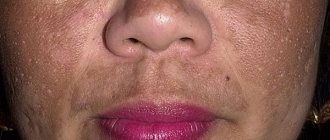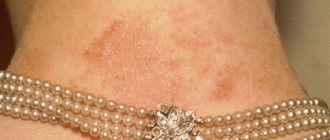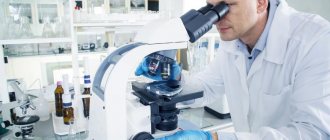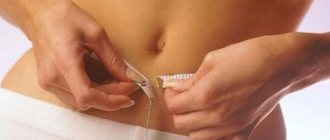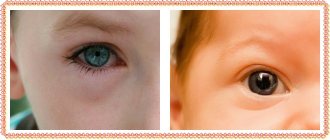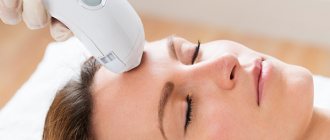- Rosacea: causes of appearance
- How to recognize rosacea on the face
- Main symptoms of rosacea
- Pink acne on the face: treatment
- Preventive methods of treating rosacea with folk remedies
Rosacea is a skin disease that most often occurs on the face and can be classified as either acne or dermatosis. Accompanied by symptoms of small pink nodules, which is different from the darker red acne. Later, due to lack of proper treatment, rosacea. can move to the next stage of development with the appearance of small purulent discharge on the head of the acne. Also, a distinctive feature of such inflammation is the expansion of the blood capillaries at the sites where rosacea appears.
Rosacea: causes of appearance
For quite long periods of time in the last century, many doctors and specialists associated the appearance of rosacea with frequent consumption of strong alcoholic beverages. Partly, this reason is true, however, what about the majority of people who cannot describe themselves as a heavy drinker? Research conducted at the end of the 20s and the beginning of the 21st century were able to provide the medical community with a more extensive list of the most likely causes of the appearance of pink acne on the body and face.
The first and, perhaps, the most common reason for their appearance is a problem with the blood capillaries under the walls of the skin. The essence of the problem lies in the too sensitive reaction of the capillaries to external stimuli, presented in the form of very spicy or hot food, long exposure to frost exceeding - 20 degrees, exposure to more 5 hours a day in heat above +30 degrees and the influence of ultraviolet radiation from the sun, the influence of fatty cosmetics or the consumption of alcohol, as well as taking certain types of hormonal contraceptives.
The second no less common group of problems and causes that cause rosacea on the skin are problems associated with the gastrointestinal tract, which has a far from indirect effect on skin problems.
Naturally, the cause of the appearance of pink acne on the face can be influenced by problems associated with the nervous system, which are closely related to the capillaries under the skin, problems due to the functioning of blood vessels clogged with cholesterol.
It is worth noting that often, if one of the listed problems is present in a person’s body, red acne may not appear on the skin, however, with a complex of two or more causes and main factors, the appearance of this kind of acne on the skin is quite likely.
The main area of distribution of rosacea is still the face, and especially the areas of the nose, cheeks, chin and forehead. More rarely, such pimples are found on unusual areas of the back or shoulders.
Also, a significant reason for the appearance of such acne is genetics, for example, this type of rosacea does not naturally occur in representatives of the dark race, while in whites or Asians the transmission of rosacea may be due to a hereditary factor in the tendency of the facial skin to such inflammations.
Formation of redheads
The exact causes of the disease have not yet been clarified . But most researchers identify the following reasons:
- aggressive influence of microorganisms,
- genetic factor
- disturbances in the gastrointestinal tract,
- failure in the immune, endocrine, autonomic nervous system,
- seborrhea,
- infectious diseases,
- features of the skin (if blood vessels are located close to the surface of the skin), its sensitivity,
- cosmetics or facial skin care products containing alcohol,
- bacterium Helicobacter pylori (causes peptic ulcers, disrupts the dermal extracellular matrix, which forms the basis of connective tissue),
- some medications, corticosteroid ointments.
Exacerbation of the disease can be facilitated by the consumption of alcohol, spices, smoked foods, foods high in caffeine, smoking, too low and high temperatures, household and technical aerosols in the air, exposure to ultraviolet radiation, and foci of chronic infection in the body.
Treatment of rosacea in many cases may not be effective enough due to the lack of a complete understanding of the mechanisms of development of the disease.
Demodex mite activity has always been considered the main cause of erythema. But now many researchers consider it only a provoking factor.
The disease often affects women 30-50 years old . One of the theories for the causes of its occurrence is that people with fair skin, blond and red hair, and blue eyes are more predisposed to rosacea.
Symptoms
If, after contact with cold or hot water, red spots appear on the face and do not disappear for a long time, rosacea can be suspected. Redness is localized on the forehead, nose, chin, and cheeks.
Such manifestations usually go unnoticed. They do not cause discomfort and are masked with cosmetics.
At the initial stage, rashes appear with persistent expansion of capillaries. The influx of blood contributes to a local increase in temperature, providing the opportunity for saprophytic microflora to multiply.
The next stage is characterized by the appearance of tubercles and irregularities of the skin, then they turn into ulcers. The skin is dense and rough to the touch, the seals are intense.
In the lupoid form of the disease, telangiectasia, local expansion of the capillary network, and spider veins appear. Rashes, brown-red papules and nodules merge, forming a bumpy surface.
Rosacea can appear during pregnancy, go away after childbirth and therapy, but appear during the next pregnancy.
In men, the disease is often complicated by rhinophyma, a benign change in the skin of the nose, in which the elements of the nose and sebaceous glands hypertrophy and enlarge. Sebum secretion increases, sebum can accumulate in the ducts and decompose, contributing to the appearance of an unpleasant odor.
If rosacea progresses , it affects the area around the eyes and eyelids, causing discomfort when blinking, pain, dryness, and a feeling of sand in the eyes. Late stages may be characterized by profuse lacrimation. Ocular rosacea is then diagnosed.
In particularly advanced cases, ocular rosacea may be complicated by rosacea keratitis. This is an inflammatory-infiltrative lesion of the cornea.
May be accompanied by corneal syndrome, mucopurulent conjunctivitis, the appearance of infiltrates and ulcers on the cornea. The disease leads to corneal opacities of varying intensity and loss of vision.
Rosacea is diagnosed by visual examination by a dermatologist . But due to the activation of demodex and possible relapses of demodicosis, treatment against the mite is prescribed, which can aggravate the patient’s condition, and the spread of red acne will progress further.
In the presence of pustules and vesicles with pus, bacteriological culture is performed.
How to recognize rosacea on the face
Poll: When did your acne appear? (Number of votes: 4295)
I've been suffering all my life
It's been a couple of years now
About a few months
Recently
To vote, click on the desired answer. results
Of course, the best option for determining the type of acne and finding out the method of treating it is to diagnose and make a diagnosis by the attending dermatologist. Diagnosis can only be done by an external examination of the structure of the inflammation itself, and it may also be necessary to undergo a certain group of tests, including blood and urine tests, as well as microscopic analysis of a small piece of skin.
At home, you can identify rosacea by its light pink color, as well as the fact that these types of acne take much longer to heal than pimples. In these types of inflammation, there is more pronounced swelling. In the later stages of maturation of these forms of acne, there may be a purulent discharge similar to for purulent acne.
If treated incorrectly or not, more severe forms of skin diseases can occur with large redness on the face Rosacea can even touch the eyes, as a result of which the eye capillaries burst and pink inflammation appears in the areas around the eyes Therefore, if the treatment process for rosacea is not started in time, Unfortunately, such a disease can lead to more serious inflammation and the development of skin infections.
How to easily and quickly cover up acne without makeup!
How it develops
At the first stage, the skin becomes pink or sharply red from external irritants, for example, hot drinks, alcohol. The blush is clearly delineated from healthy areas, in the shape of petals or a butterfly. After eliminating the provoking factors, the redness goes away and the skin returns to its normal state.
Periods of exacerbations and remission follow each other, so it is difficult to notice the onset of the disease. Over time, the duration of remission decreases. Gradually, the skin acquires a pink or reddish tint, thickens, swells, and purulent rashes and pimples appear. Pathogenic microorganisms develop on the skin. No remission is observed.
Persistent redness of the face, regardless of provoking factors. The oiliness of the skin increases, the metabolic processes of the epithelium are disrupted.
Vascular rosacea is a pronounced redness of the face, a dense capillary network appears on the surface. Over time, the skin turns purple and becomes covered with bumps resembling acne. There is a burning sensation, tingling, itching, and tightness.
Inflammatory rosacea. Papules and pustules form on the skin.
Late rosacea is the appearance of irreversible skin defects. The most severe of them is rhinophyma.
Rosacea is an unpleasant disease, but it is possible to get rid of it. Treatment correctly selected by a doctor and carried out under the supervision of specialists leads to positive changes. The disease is difficult to cure, therapy takes a long time, and the results are noticeable after several months.
Main symptoms of rosacea
In the first stage, small, inflamed pink rashes develop, most often on the nose, cheeks, chin or forehead.
In the second stage of the disease, small purulent inflammations often appear on the head of the acne.
During the third and last stage of the formation of the rosacea disease, as a result of the prolonged action of vasodilation, a process of formation of a network of burst capillaries occurs, which is reflected on the facial skin in the form of a long line of redness and large inflammations of rosacea. At this stage, aggravation around the eyes and a feeling of dryness in the eyes are also possible .
Rosacea photo
Physiotherapy
For rosacea, physiotherapy helps to clear the skin, which can be used at any stage of the disease, regardless of drug therapy. Rosacea is reduced and gradually disappears when used:
- exposure to long-wave laser;
- electrocoagulation;
- cryotherapy.
The techniques used constrict blood vessels, reduce blood flow to the face, and have an anti-inflammatory and cooling effect. Almost the same physical therapy options help eliminate or reduce scars formed at the site of the pustular elements of the rash.
To quickly and permanently clear the skin of rosacea, you need to start therapy in the early stages of the disease, treat acne using local and systemic medications, following all medical prescriptions.
Pink acne on the face: treatment
The problem with treating pink acne on the face is that using even the most effective and reliable treatment methods without proper diagnosis and an individually selected course of treatment by the attending physician - a dermatologist - can lead to adverse skin reactions and new foci and stages of inflammation.
The second problem in the treatment of rosacea is that after diagnosing the problem of their appearance, in addition to getting rid of the external inflammation of rosacea, you also need to resort to a complex treatment of internal problems associated, for example, with dilated blood vessels, nerves and other problems in the body that you can determine. They are simply not competent to cure it on their own.
Treatment of rosacea is carried out by treating both external and internal causes of its occurrence by taking medications by mouth, including antibiotics, or applying creams or ointments for external use as prescribed by the attending physician.
The duration of the course of treatment for rosacea and acne depends primarily on at what stage of development you see a doctor. Of course, with an early stage of the disease you will need less than a month, while at a later stage it may take from 2 months to half a year.
The main means for external treatment of rosacea are creams and ointments, the main active component of which is metronidazole. At the end of the course of treatment, to completely get rid of rosacea, a cosmetic method can be used to remove large blackheads or the consequences of their presence on the skin by removing them with a laser.
Preventive methods of treating rosacea with folk remedies
A fairly large number of folk recipes can indirectly or directly help us get rid of rosacea and acne, or help you prevent the process of inflammation and the development of rosacea infection:
- One such remedy is calendula tincture, which must be applied by dipping a gauze bandage into it and applying it to the face.
- You can also use yarrow tincture for a large number of acne on your face. To prepare it, you just need to pour boiling water over two tablespoons of its herb, and then wait for the natural medicine to infuse for half an hour.
- White cabbage juice, which is also applied to the skin by applying a gauze bandage to the face, will help you reduce inflammation and remove ulcers on acne.
- A tincture of nettle leaves will help you especially effectively against rosacea, which should be prepared in the proportions of 2 nettle leaves per 200 ml of water. The product should infuse for at least two hours.
Complications
If facial rosacea is not treated, a number of serious complications may develop. Among them, rosacea keratitis occupies a special position - a disease that affects the eyes and, in especially advanced cases, leads to loss of vision.
Rhinophyma - thickening of the nasal area - a complication that occurs in males. Women do not develop this pathology.
In the purulent form of the disease, the addition of a secondary infection with all the associated risks, including tissue necrosis and sepsis, cannot be ruled out.


